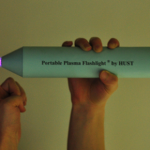This post was prompted by a paper that somehow got into the Journal of Trauma this month on nonoperative management of delayed splenic rupture after trauma. It’s a bad retrospective review of 15 patients which I’ll say more about tomorrow. There’s very little good literature on this topic, so I wanted to share some personal observations.
Back in the days before CT scan (and unfortunately, I remember them), the diagnosis of abdominal injury was much more difficult. It was primarily qualitative, meaning that we somehow figured out that they either had it or they didn’t. We could not very easily figure out what specific injuries a given patient had. However, management was simple: we went to the operating room, found out and fixed it.
Sometimes, though, we would encounter a patient who had been involved in some type of blunt trauma a week or two earlier who presented to the ED with left-sided abdominal pain, shock and anemia. The diagnosis was “delayed splenic rupture” and they were taken to OR for a splenectomy.
When CT scan came along, we found out that these were actually “delayed recognition of splenic injury.” We still took them to the OR for splenectomy, but with experience this slowly gave way to splenic repair, and then to nonoperative management.
There is still one subset of these injuries that is problematic: spleen injury with a contrast blush. It turns out that there are really two types of blush: contrast seen within a pseudoaneurysm within the splenic pulp, and extravasation. And furthermore, the pseudoaneurysm is the culprit in most “delayed splenic ruptures.”
Tomorrow, I’ll write about how to recognize this potential problem, what to do about it acutely, and what to do if it was missed and the patient presents to your ED ten days later in shock.
Related post:
Reference: Nonsurgical management of delayed splenic rupture after blunt trauma. J Trauma 72(4):1019-1023, 2012.


